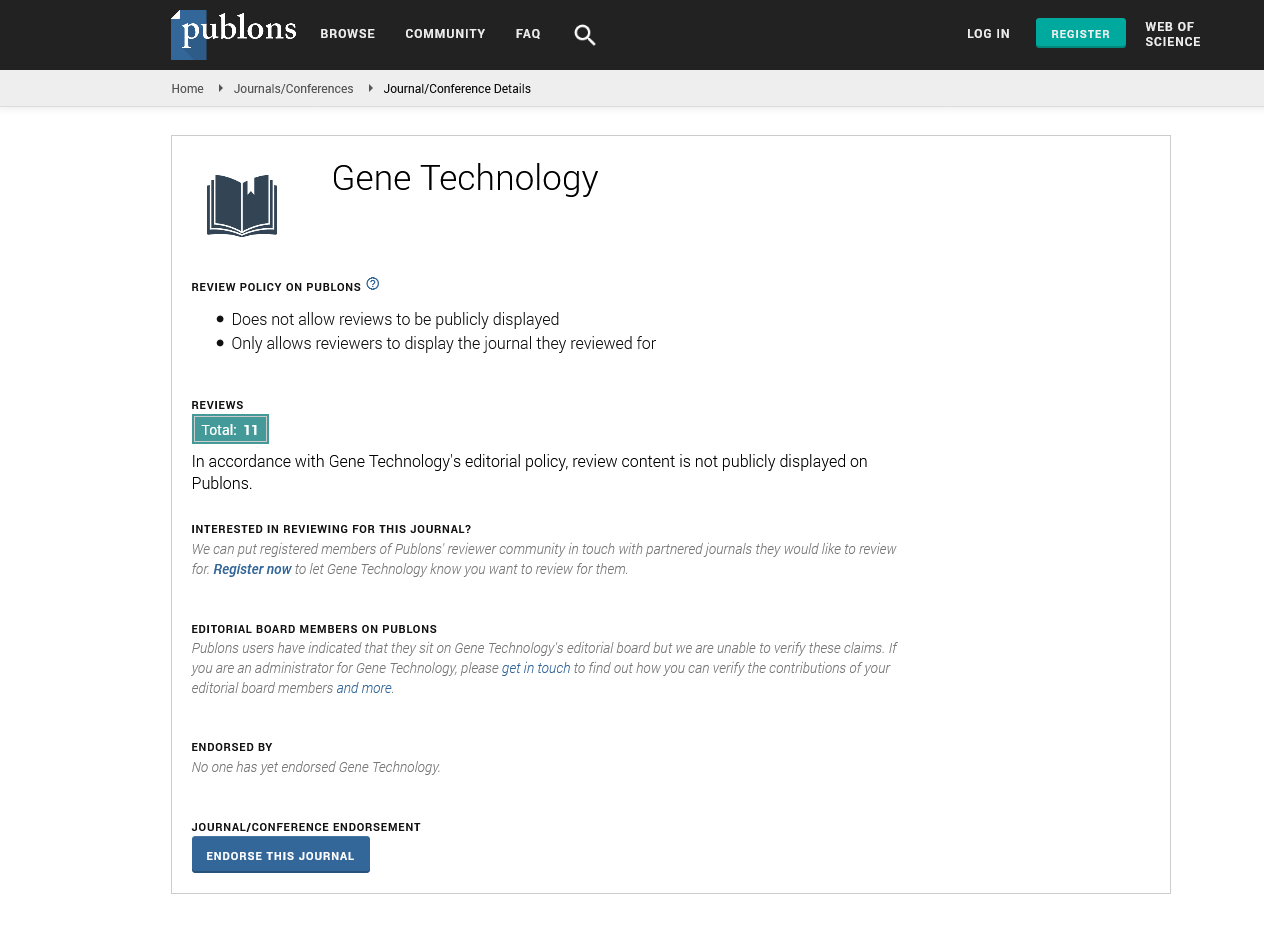Indexed In
- Academic Keys
- ResearchBible
- CiteFactor
- Access to Global Online Research in Agriculture (AGORA)
- RefSeek
- Hamdard University
- EBSCO A-Z
- OCLC- WorldCat
- Publons
- Euro Pub
- Google Scholar
Useful Links
Share This Page
Journal Flyer

Open Access Journals
- Agri and Aquaculture
- Biochemistry
- Bioinformatics & Systems Biology
- Business & Management
- Chemistry
- Clinical Sciences
- Engineering
- Food & Nutrition
- General Science
- Genetics & Molecular Biology
- Immunology & Microbiology
- Medical Sciences
- Neuroscience & Psychology
- Nursing & Health Care
- Pharmaceutical Sciences
Abstract
Human Skin Gene Expression, Attributes of Botanicals: Angelica sinensis, a Soy Extract, Equol and its Isomers and Resveratrol
Edwin D. Lephart
Because of its accessibility, skin was one of the first organs to be examined by gene technologies. Mircoarray/mRNA techniques have demonstrated the valuable aspects of this methodology for the elucidation of and the quantification for changes in human skin related-genes. It is important to review/understand how botanicals influence human skin gene expression (by stimulation or inhibition of certain genes) and to compare these biomarkers to the known mechanisms of skin aging. This review covers how human skin genes are modulated by 1) enhanced wound healing with an extract of a well-known medicinal plant in Asia, Angelica sinensis, 2) UV sunlight exposure that represents the main cause of photoaging or extrinsic skin aging and subsequent protection by a soy extract, 3) equol and their isomers that stimulate collagen and elastin while at the same time inhibit aging and inflammatory biomarkers and 4) resveratrol, the most high profile phytochemical known by the general public that displays some properties similar to equol with the additional benefit of stimulating the anti-aging surtuin or SIRT1 biomarker. Thus, the protective influences of botanicals/ phytochemicals elucidated herein provide potential applications to improve human skin health.

